September 2025
If you know me, you know that I’ve loved Bob Dylan since I was at school.
When I say love, I mean I’ve been seriously, embarrassingly devoted.
Did I read Robert Shelton’s Dylan biography when I was a student? Tick. Notes in the margin? Embarrassingly, tick.
Ownership of the authorised book of lyrics? Tick. Notes in the margin? Ugh, tick.
Have I drawn portraits of the young Bob Dylan? I have. Cartoons? Yes.
Do I own postcards, LPs, CDs and DVDs of, by and featuring Bobby D? Obviously. Was there I time when I would gladly have offered a finger on my left hand for a Times They Are A-Changin’ T-shirt? Yes.
You get it. I love his words, I love his sound, I love his politics, his philosophy … I just love his vibe.
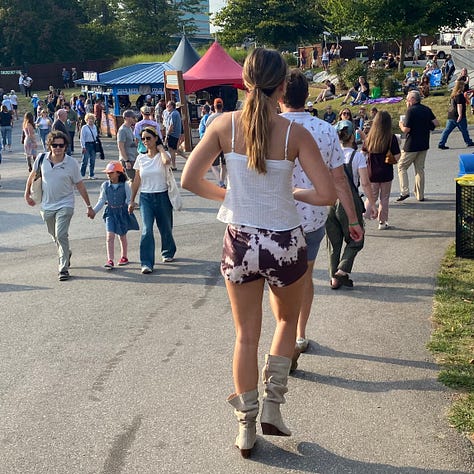
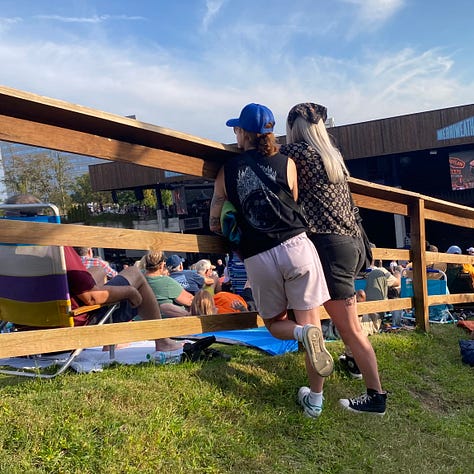
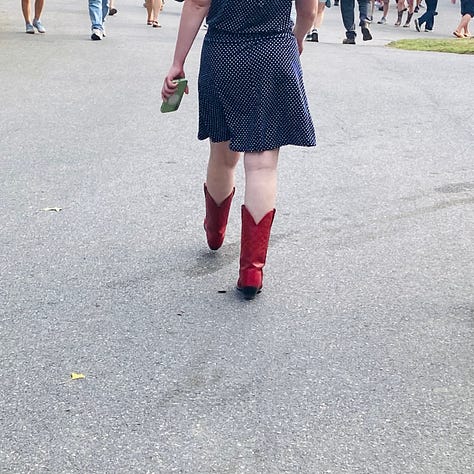
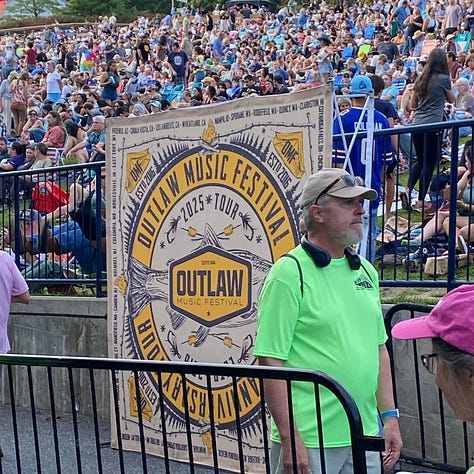
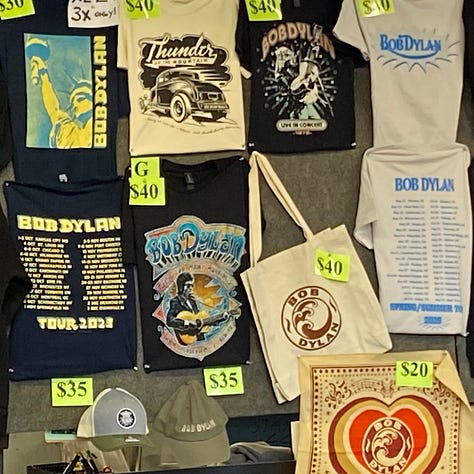
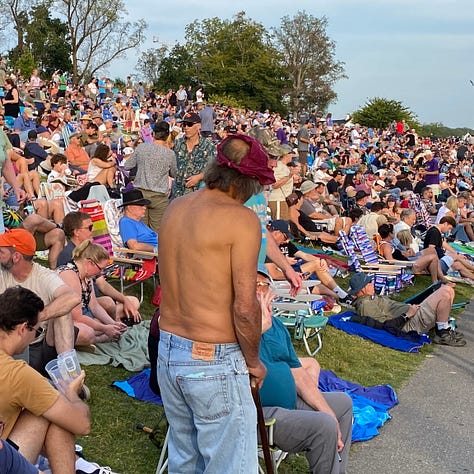
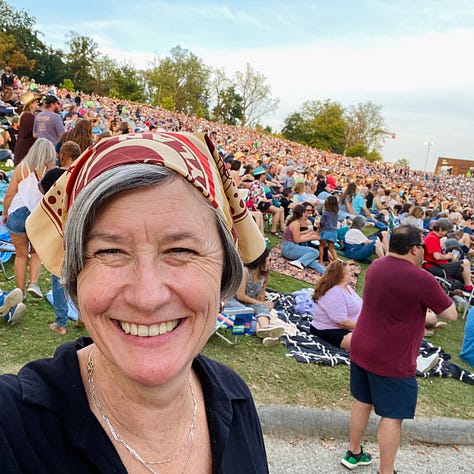
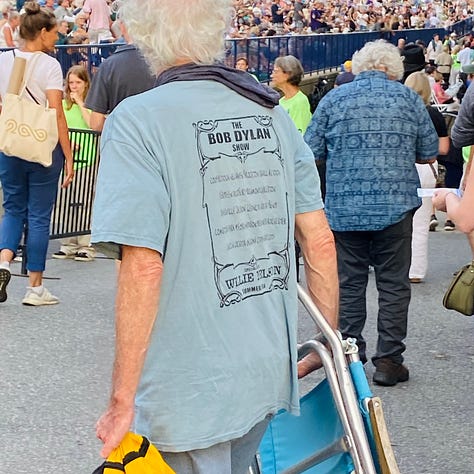
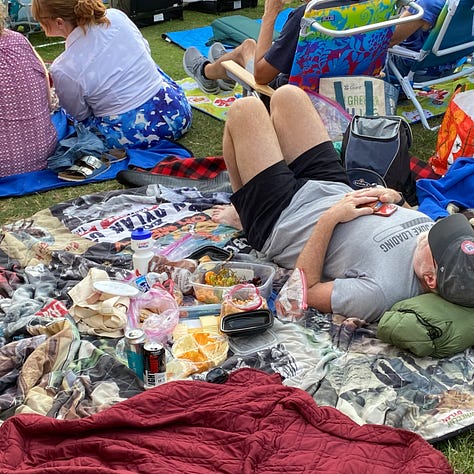
Last night, I saw Bob Dylan, live in concert, FOR THE FIRST TIME.
You’d think I would have led with that. You’d think I would have spent Sunday combing out a Joan Baez wig and stocking up on slim, dark cigarillos in a silver case and lining my husband’s eyes with kohl and forcing my son’s feet into black suede Cuban-heel ankle boots.
Naw.
I knew what was coming. At 83, Dylan performs only under the strictest conditions.
These days, the Nobel Literature prize winner (2016) takes to the stage only once it’s dark out.
His outfit – if you can make it out when he walks on – will disappoint. It will be dark, shapeless and unadorned. He will likely be wearing a hat that will cover most of his face.
Even with a spotlight and an arena screen, it will be difficult to determine, by sight, if this is in fact the great poet / musician / activist / aesthete – or if this is just someone’s grandpa who went to Woodstock and walked and spoke with a lilt forever after.
Guess what? There is no spotlight or close-up. Bob Dylan sits for the entire concert behind a piano. He doesn’t stand, he doesn’t wave. He doesn’t utter a word to the crowd.
On the top of the piano there are two sprays of light – two light bouquets, if you like, similar to mini Christmas trees – and these obscure any view that you might have of the great man’s face.
As a nice young man standing next to me said, “It’s by design.”
On stage, Bob Dylan is literally unidentifiable. Trying to make out his head is like trying to discern a leopard in a tree, in the dark, without binoculars.
I cannot emphasise this enough: Those of us in the cheap seats saw nothing more than the occasional movement of the top of a hat, while the twangy sound and salty words of this most influential of musos was pumped into the night darkness of the Merriweather Post Pavilion.
What about sing-along hits?
Dylan played Masters of War, Desolation Row and All Along the Watchtower. All three were recognizable only by their lyrics. The rest of his set consisted of recent or relatively unbeloved songs, often played in the bluesy manner of Muddy Waters.
I’m being entirely truthful when I say this: my first and only evening with my hero, Bob Dylan, consisted of an unrecognizable man emerging from darkness into darkness. His voice was strong and sure. That was Bob singing, but was it him on stage?
The point of attending a music concert is to experience the music live. There should be some life to it. There should be some shared energy, some kind of moment between artist and fan.
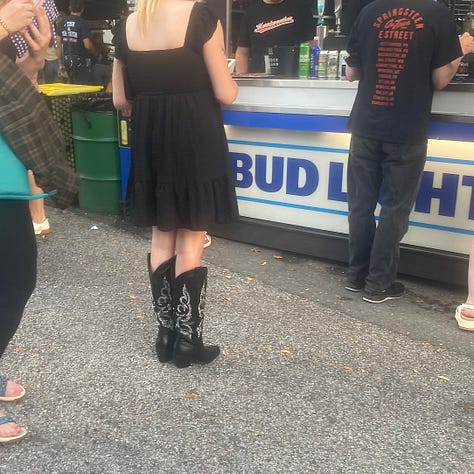
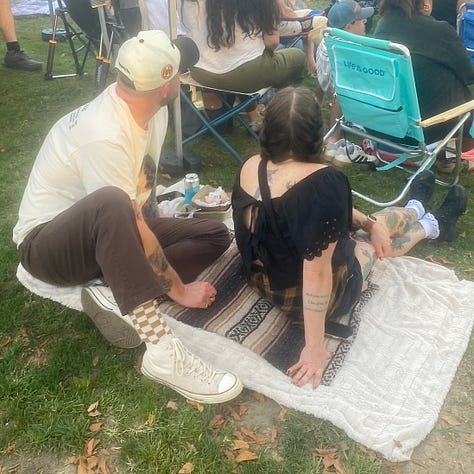

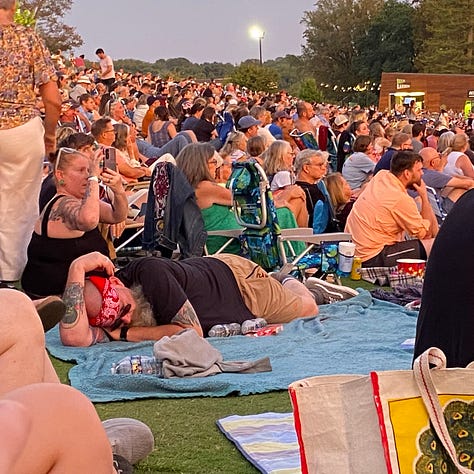

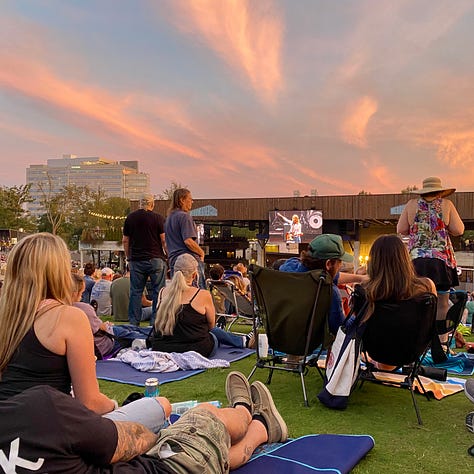
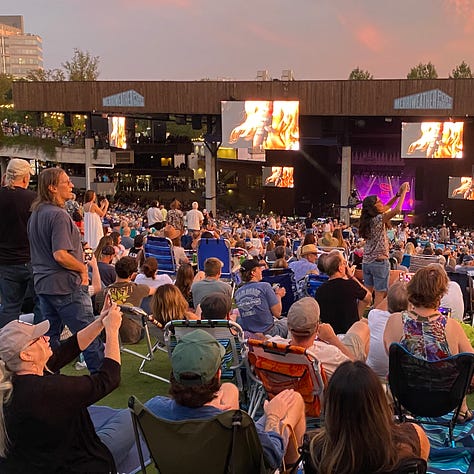
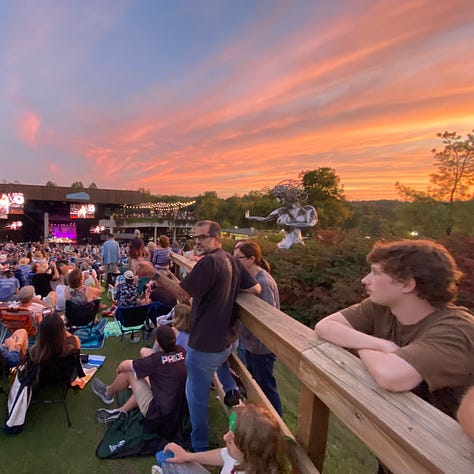
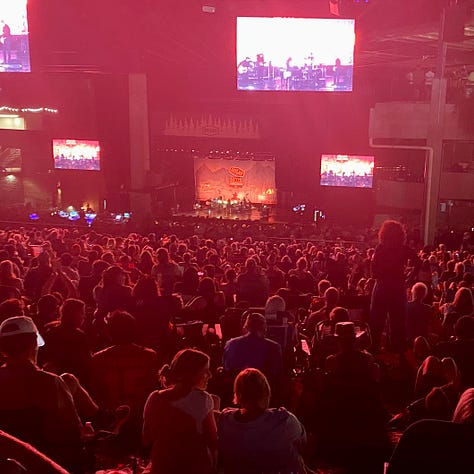
So why buy a ticket? Why go?
I went because I love Bob Dylan and I love his work. I went because I wanted to see him, and hear him. Just once.
I didn’t go because Bob Dylan is an entertainer. He’s not Bruce Springsteen. He’s not a performer.
Bob Dylan is not Timothee Chalamet. Bob Dylan is not the performer who will play him in the Broadway musical of his life.
The real-life Bob Dylan is a tricksy, slippery, obtuse artist. It’s part of what makes him brilliant. In the world of his songs, meaning is relative and emotions are unreliable. Society’s structures and systems are laughably unsuitable to happy human life.
In Dylan’s world, the key to contemporary life is not to find an anchoring purpose, but to create one.
Dylan’s purpose has never been to please his individual fans. Like recording equipment and album covers, audience is a necessary part of the industry.
But I do think Dylan cares about his audience, as an entity. If he didn’t, he wouldn’t have recorded and released his music. I think he cares about change – changing minds and changing the world.
He also cares about changing things up musically.
If there’s one truth you need to know about my guy, it’s that he bores easily. Bob Dylan cannot last in a place, in a musical genre, in a religion, in a political struggle, or in a relationship.
Bob Dylan likes to move onto the next thing. He tires of sameness. He craves extension, challenge – new forms of joy, new forms of expression. He becomes grumpy, belligerent if you try to hold him back. He demands artistic freedom.
You might have guessed I’d say all that. It’s been said before.
I don’t think that’s all there is. I think this image of Dylan as an unpredictable curmudgeon is unjustified.
On the contrary, Bob Dylan might be one of the hardest-working men ever in show business.
He’s not a famously energetic performer, but he has been performing on stage for nearly seventy years.
Dylan’s first live performance was in 1956, at the age of 15.
He performed again in 1958.
He took the stage twice in 1959.
In the early 1960s, he put on 30 shows.
Dylan’s first world tour started in February, 1964 – when he was 23, more than sixty years ago.
He appeared on stage 47 times that year. In other words, nearly once a week. The following year, in 1965, he performed on stages around the world 69 times.
In the 1970s, he played 280 shows.
In the 1980s, 388 concerts.
It keeps going up. Look at the ‘90s.
Never Ending Tour 1990: 93 shows
Never Ending Tour 1991: 101 performances
Never Ending Tour 1992: 92 shows. Madison Square Garden: 1 show
Never Ending Tour 1993: 80 concerts.
Never Ending Tour 1994: 104 shows. Woodstock ‘94: 1 show. MTV Unplugged: 1 show
Never Ending Tour 1995: 116 performances
Never Ending Tour 1996: 84 shows
Never Ending Tour 1997: 93 concerts
Never Ending Tour 1998: 110 shows
Never Ending Tour 1999: 119 shows
Did you know Bob Dylan was performing this much at this time?
Never Ending Tour 2000: 112 performances
Never Ending Tour 2004: 111 concerts
Never Ending Tour 2006: 99 shows
Never Ending Tour 2009: 97 performances
Never Ending Tour 2010: 102 shows
Never Ending Tour 2011: 89 concerts
Bob Dylan was born in 1941. In 2021, at the age of 80, he had performed on stage about 3720 times to millions of people on five continents.
Beyonce has performed live 277 times.
Michael Jackson did 274 shows.

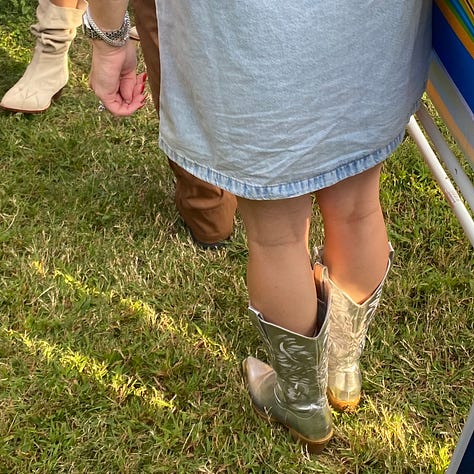
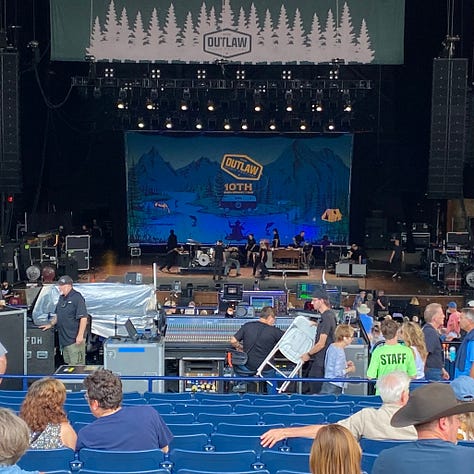
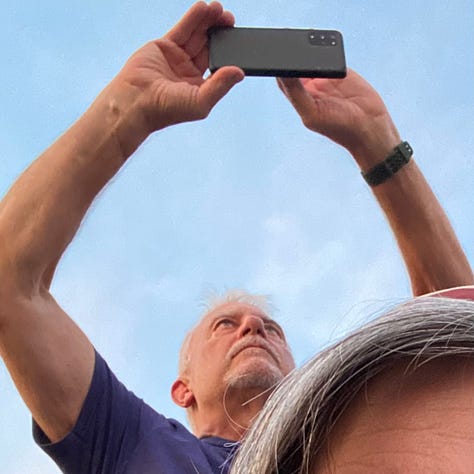
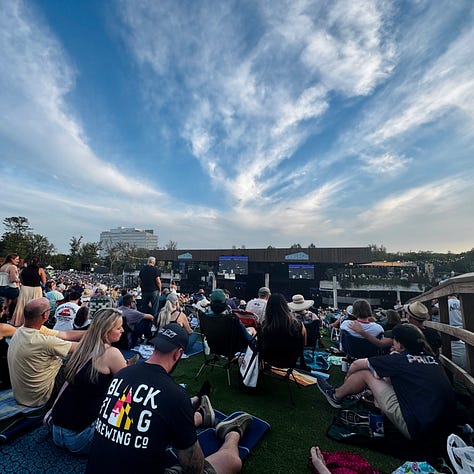

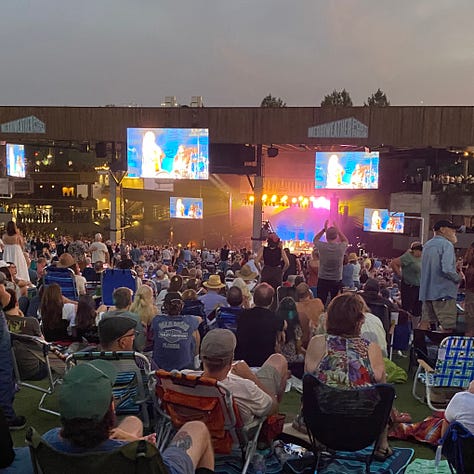
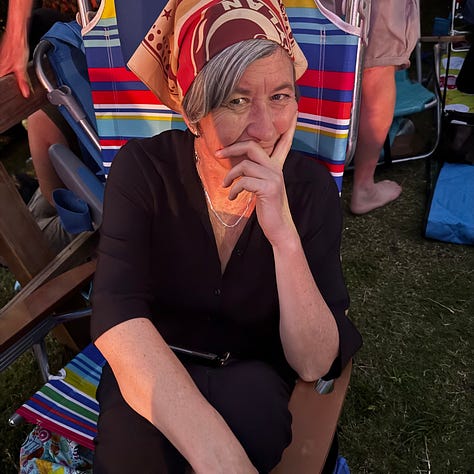
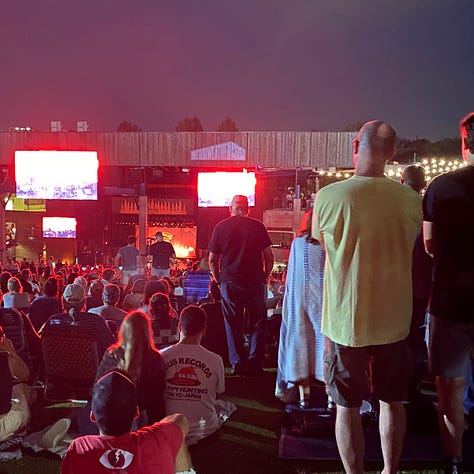
Last night’s performance edged Bob Dylan closer to his 3750th show.
Dylan is not famous for being a performer. He’s famous for being the world’s greatest songwriter, alive or dead.
He’s famous for his 40 studio albums (and live albums, and compilations and 17 volumes of The Bootleg Series) that span musical genres and topics as broad and varied as 20th Century America.
Outside his fan base, why is Bob Dylan not more famous for the herculean effort he has made taking his music to its listeners?
It’s probably because he has never shimmied or glad-eyed or woo-hooed. On stage, he’s not glamorous or showy or funny.
But even taking into account the peculiar extremes of his current performances, Dylan deserves respect.
It won’t surprise you to hear that last night he had it.


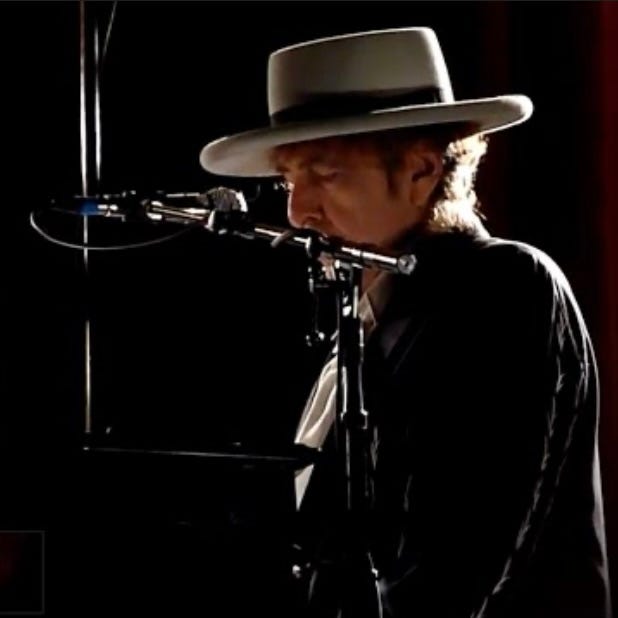
I love reading your writings and seeing your pics, dear Daisy 🥰
I like him even more now after reading this.